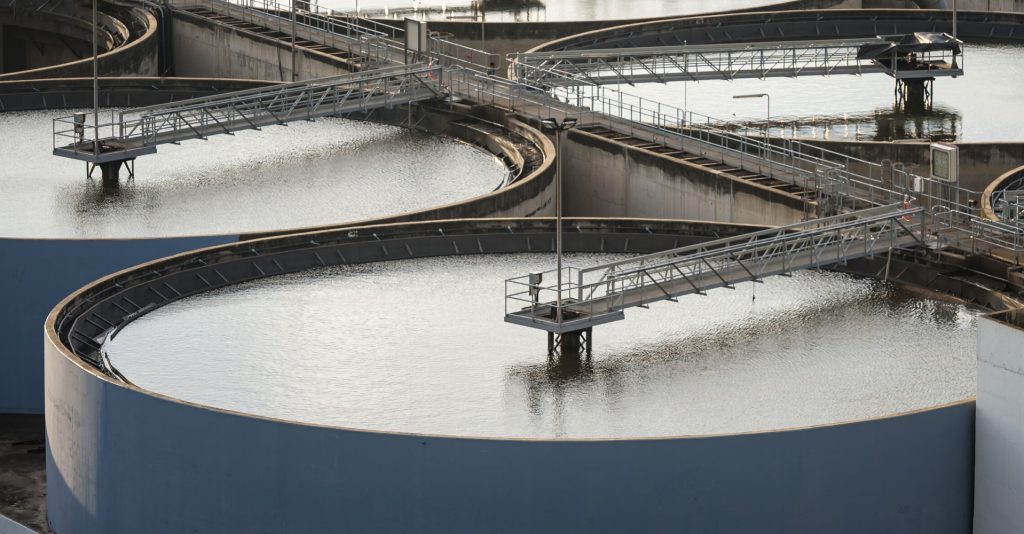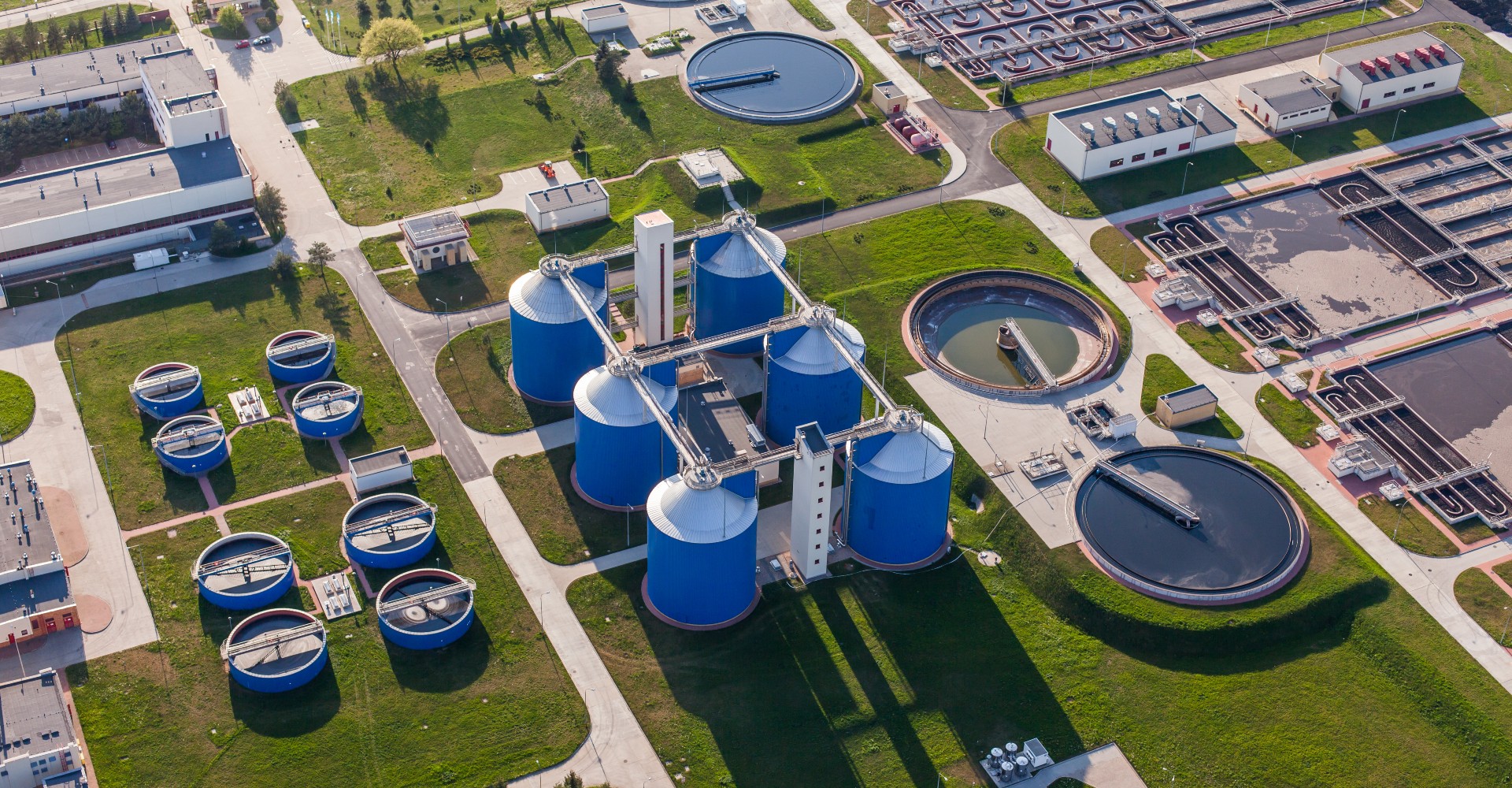Wastewater treatment is the culmination of all physical, chemical, and biological processes used to remove harmful pollutants before discharging the wastewater back into the environment. Wastewater tends to be a second thought for many people but it’s vital to recognize that the chances of disease outbreaks and added environmental pollution increase exponentially without this crucial operation. It’s a good idea to understand how waste treatment works so the associated ecological implications can be better appreciated.
Read on to get an in-depth understanding of the treatment process, the current wastewater facility limitations, and the impact on the portable restroom industry.
Understanding the Waste Treatment Process
Thoroughly treating and reclaiming water from wastewater is vital to preventing the spread of diseases and other environmental hazards. Wastewater is any water that was used within homes or businesses for:
- Bathing
- Washing dishes
- Flushing toilets
- Storm sewers
Wastewater treatment is the process of removing pollutants from disposed water through a series of physical, chemical, and biological methods. These processes exist to ensure the water is safe to reenter the environment.
How It Works
The Environmental Protection Agency (EPA) and several other federal, state, and local ordinances instill safety requirements and conditions that all wastewater facilities must follow. These enacted laws protect against the hazardous effects of wastewater on the environment. One way to ensure safe, clean water after disposal is through the essential waste treatment process. Learn more about how it works below:
EPA APPROVED Portion Control Deodorizer Eco Blue is biocide and bacteria free making it fully biodegradable and treatment plant friendly
Stage One: Bar Screening
The initial treatment begins with screening out oversized items, like garbage, through a bar screen. You see this happen in the restroom industry constantly. People throw a LOT of large items down the drain. When this happens it can be costly on you and sometimes impossible to process at treatment facilities. Screening out these items prevents unwanted objects from clogging the treatment system.
Stage Two: Screening
Another screening stage helps remove grit before it can clog the pumps. The sediment sinks to the bottom, and water and organic materials carry on to the next step. This allows the chamber to collect heavier remains for removal.
Stage Three: Primary Clarifier
Now, waste treatment facilities begin to separate the solids and liquids. Organic solids, also known as sludge, will sink to the bottom of the tank, be pumped out, dried, and shipped away. After all the water is extracted from the sludge, it is often used for fertilizers.
Stage Four: Aeration
Aeration is essential to provide oxygen for bacteria and will encourage the breakdown of organic materials. Air is pumped into the aeration tank while the mixture is continuously monitored to ensure the bacteria grows and propagates to expedite this cycle.
Stage Five: Secondary Clarifier
As the treated wastewater exits the aeration process, it is pumped into a secondary clarifier, to remove small solids or activated sludge. Some of the active bacterial growth helps accelerate the breakdown of organic material while any excess is discarded.
Stage Six: Disinfection (Chlorination)
Disinfection is the next step, and one of the most important. Waste treatment facilities add chlorine to kill any remaining bacteria within the contact chamber. While chlorine is the most common disinfectant, UV and ozone disinfection are also increasing in popularity.
Stage Seven: Water Analysis & Testing
Testing occurs at this stage to ensure the appropriate amounts of nitrates, phosphates, ammonia, pH levels, dissolved oxygen, and residual chlorine levels.
Stage Eight: Disposal
A final assessment is completed. Treatment facilities must ensure the clean water exiting the treatment plant, and that it meets permit specifications to be reintroduced into the environment. Any treatment plants that don’t meet these strict discharge levels will receive fines. In some cases, not meeting the environmental regulations can lead to jail time!

Waste Treatment Facility Limitations
The sanitation industry continues to deal with the ever-growing amount of human waste. Economic expansion and urbanization have increased the need for more wastewater-related operations. Waste facilities have imposed greater restrictions and guidelines on which chemicals can be used in the portable restroom industry. This is an attempt to simplify the treatment process. Below are several reasons for these changes:
- Lack of infrastructure
- Significant energy consumption
- Changing technological needs
- Expensive to staff and build
- Higher regulations
- Reduced funding
- Risk of disease outbreaks
Unfortunately, as municipal and human waste levels rise, the treatment costs and fines for illegal dumping also increase. These impositions also attempt to curtail the spread of COVID-19, which epidemiologists have noticed appearing in wastewater samples throughout the country.
If you’re looking for deodorizers that meet these strict guidelines, Satellite Industries manufactures a new packet product with no hazardous materials that doesn’t sacrifice fragrance or deep blue color – ECO BLUE.
COVID-19’s Impact on the Waste Sector
COVID-19 significantly impacted the waste management sector. An intricate link exists between many of the common flu and cold strains, wastewater, and efficient sanitation. The risk of rapid exposure is intensified in disadvantaged areas, where there is a severe lack of access to clean water and sanitation.
Illegal dumping and burning intensify this risk, leading to corresponding illness and disease outbreaks. The way to aid in waste treatment facility limitations is to invest in more infrastructure and adequate sanitation. This could help manage the ever-growing amount of waste produced while also protecting the environment.
Aiding Wastewater Treatment Facility Limitations
It’s impossible to slow down the rising costs of safely processing wastewater, but there are steps that businesses can take to reduce their expenses while also helping treatment facilities. These steps include:
- Decreasing or removing all hazardous materials
- Using eco-friendly deodorizers
- Frequent waste disposal schedules
- Eliminating formaldehyde products
- Using easily processed chemicals
These modifications are key to striving and growing your business in the portable restroom industry. If you provide portable sanitation equipment, you have to use germ-killing chemicals to aid in regular and thorough disinfection. Then, you’ll need to meet all of the safety standards in your area of operation. You’re probably familiar, but some of the most common products to help with this are:
- Deodorizers
- Disinfectants
- Biocides
- Surfactants
- Fragrances
- Hand soaps
- Sanitizers
The EPA, local and federal governments, and concerned individuals are pushing for more easily processed and eco-conscious chemicals. It’s best to work with reputable companies that meet these requirements. Browse portable restroom chemical provider’s product lines for trusted items that meet high environmental standards.
Septic Truck Disposal Process Required Permits
All PROs and Waste Disposal Technicians need to use septic tanks to transport and properly dispose of wastewater. Updated permits are required in any professionals working in the following fields.
- Cesspools
- Grease traps
- Pumping septic tanks
- Holding tanks
- Stocking or cleaning toilets
It’s also worth noting that vacuum truck operators, portable restrooms operators, property owners, and wastewater treatment facilities all need updated permits to stay in operation!
The Future of Waste Management
To effectively remove harmful pollutants from our wastewater, waste treatment facilities continue to evolve their process. We know it’s stressful to worry about the increasing cost of some chemicals and deodorizers. However, it’s equally stressful to pay fines for using non-eco-friendly/EPA-approved products. It’s a good idea to reduce waste disposal expenses by utilizing more environmentally-friendly chemicals. By taking sustainable actions, you can ease the waste treatment process without burdening an already overwhelmed system.
At Satellite Industries, we understand how crucial it is to have access to clean portable restrooms, environmentally friendly chemicals, and frequent dumping for the health and safety of all. Our regional specialists work with companies to pick the best products that meet state dumping requirements. Contact Satellite Industries today to upgrade your waste management services to meet the ever-growing changes within the wastewater industry.

